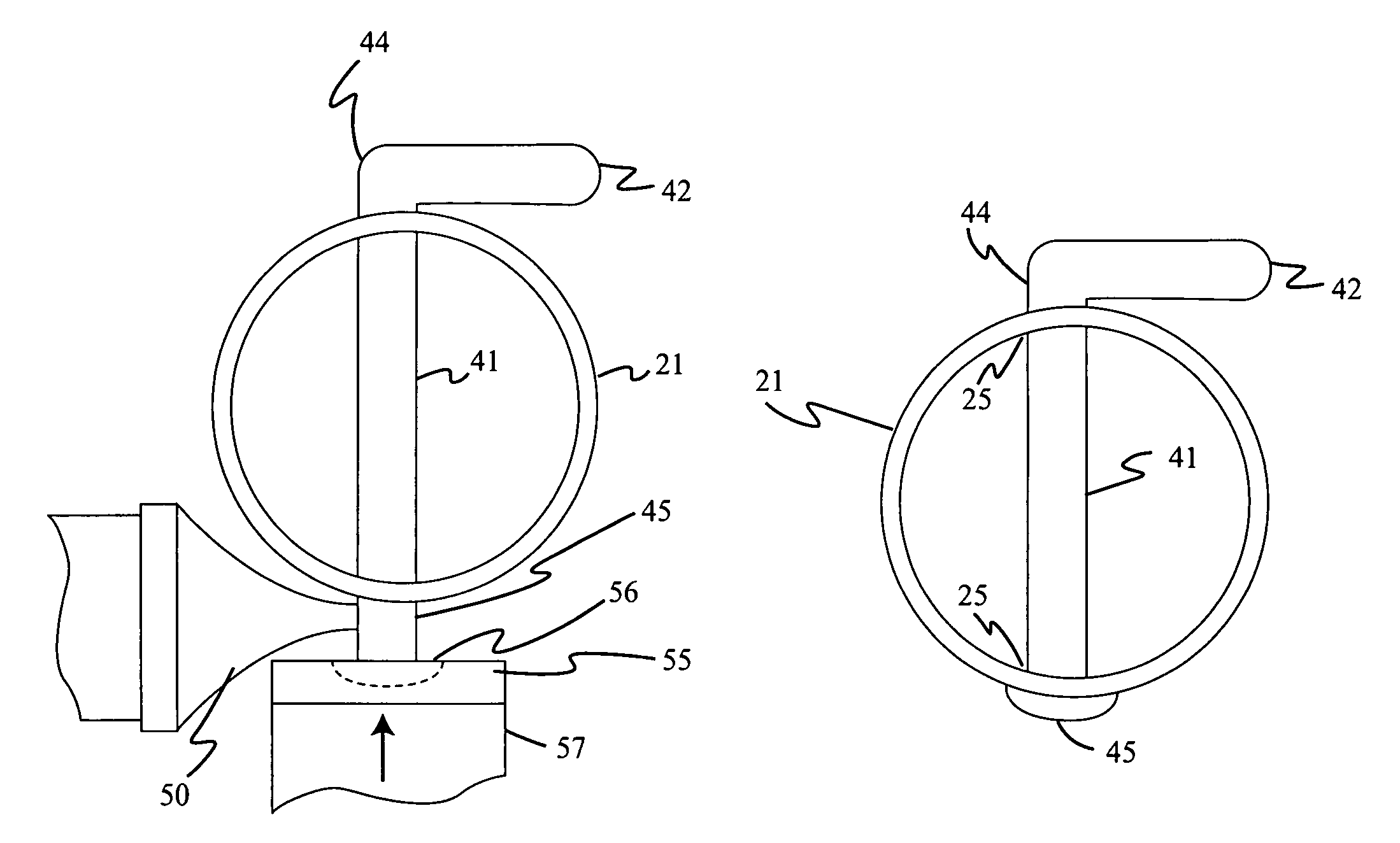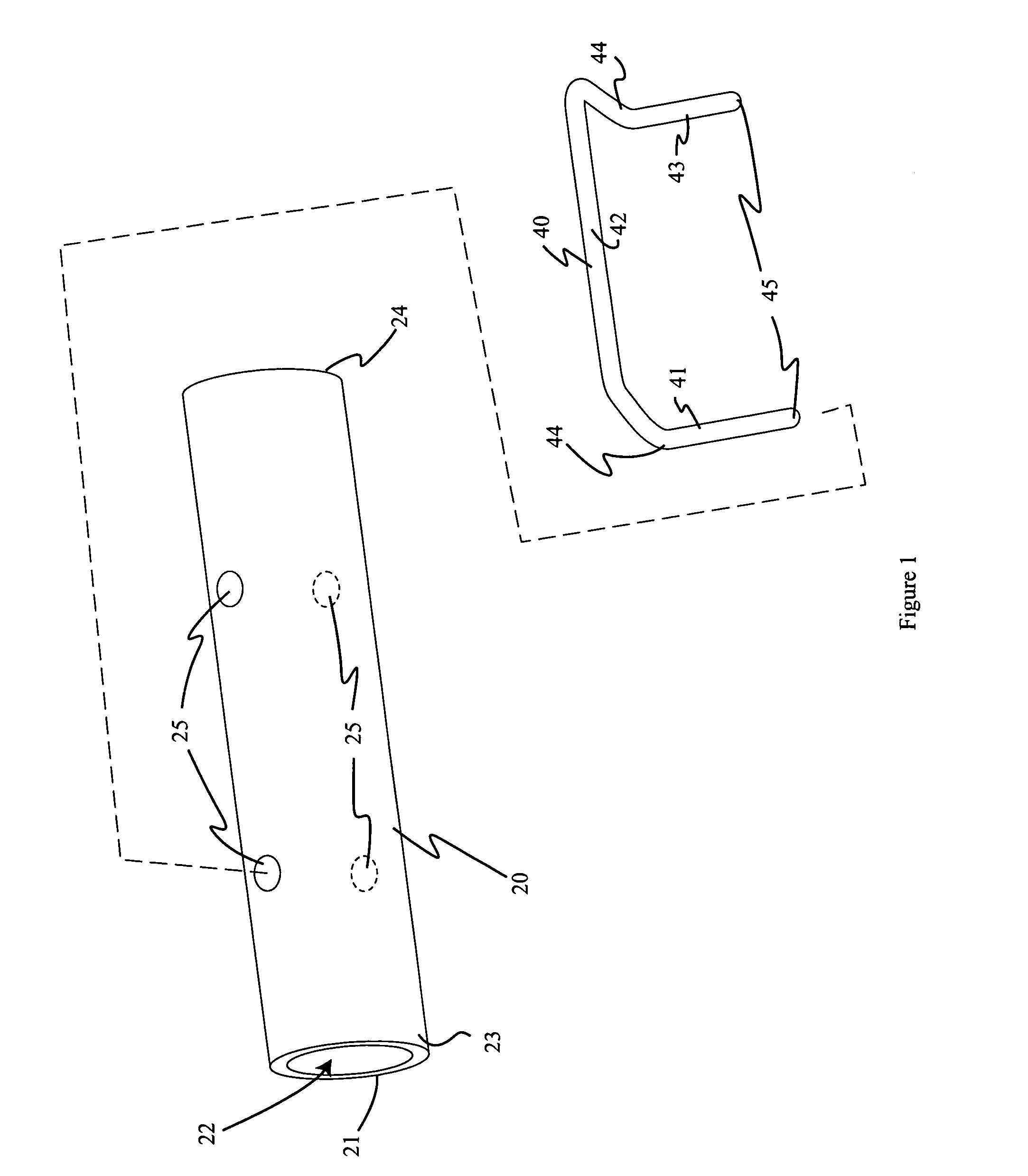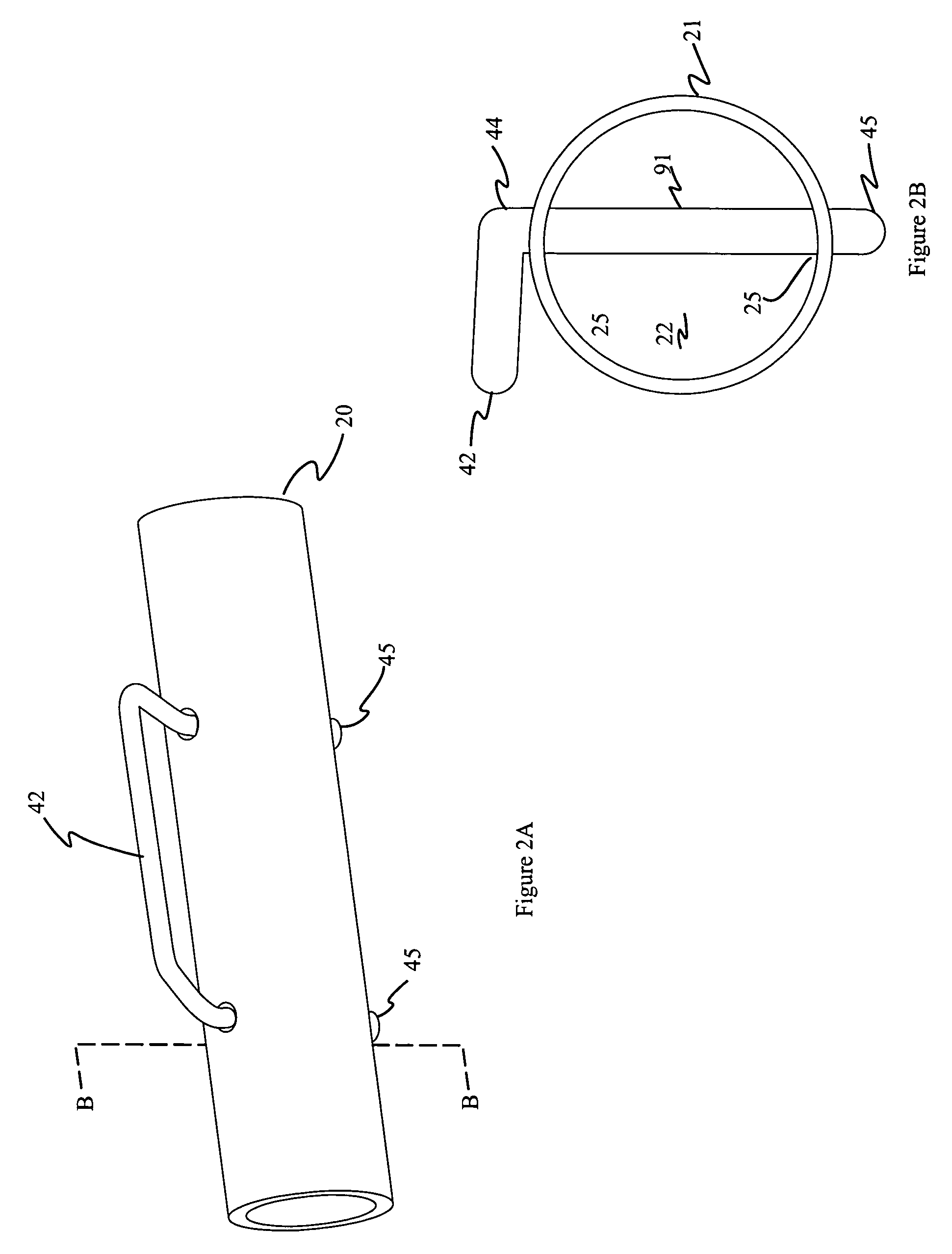Resistance welded wire to hollow tubing joints and method
a technology of resistive welding and hollow tubing, which is applied in the direction of machine supports, child seats, manufacturing tools, etc., can solve the problems of long cycle times, unsatisfactory uniform welds, defects and rattles, and achieve the effect of reducing consumable costs and reducing long cycle times
- Summary
- Abstract
- Description
- Claims
- Application Information
AI Technical Summary
Benefits of technology
Problems solved by technology
Method used
Image
Examples
Embodiment Construction
[0040]In FIG. 1, representative tube 20 and formed wire 40 are shown. Tube 20 is formed of a cylindrical wall 21 of metal defining lumen 22 and has a first end 23 and opposite second end 24. Openings 25 on the exterior surface of tube 20 define pathways that proceed substantially through the center point of the cross section of the tube to openings 25′ on the opposite tube wall. The work piece 40 has a central section 42 and a first leg section 41 and second leg section 43, each having an end 45. Between the legs 41, 43 and central portion 42 is typically a bend 44 in the wire form 40.
[0041]The formed wire 40 is shown with legs 41, 43 inserted through apertures 25, 25′ in FIG. 2A. The ends 45 of leg portions 41, 43 extend through the lumen 22 of the tube and out the opposite side of the tube wall 21 through openings 25′. FIG. 2B is a sectional view taken along line B-B of FIG. 2A and shows the first leg portion 41 extending substantially through the center of the lumen 22 and end 45...
PUM
| Property | Measurement | Unit |
|---|---|---|
| diameters | aaaaa | aaaaa |
| forces | aaaaa | aaaaa |
| diameter | aaaaa | aaaaa |
Abstract
Description
Claims
Application Information
 Login to View More
Login to View More - R&D
- Intellectual Property
- Life Sciences
- Materials
- Tech Scout
- Unparalleled Data Quality
- Higher Quality Content
- 60% Fewer Hallucinations
Browse by: Latest US Patents, China's latest patents, Technical Efficacy Thesaurus, Application Domain, Technology Topic, Popular Technical Reports.
© 2025 PatSnap. All rights reserved.Legal|Privacy policy|Modern Slavery Act Transparency Statement|Sitemap|About US| Contact US: help@patsnap.com



